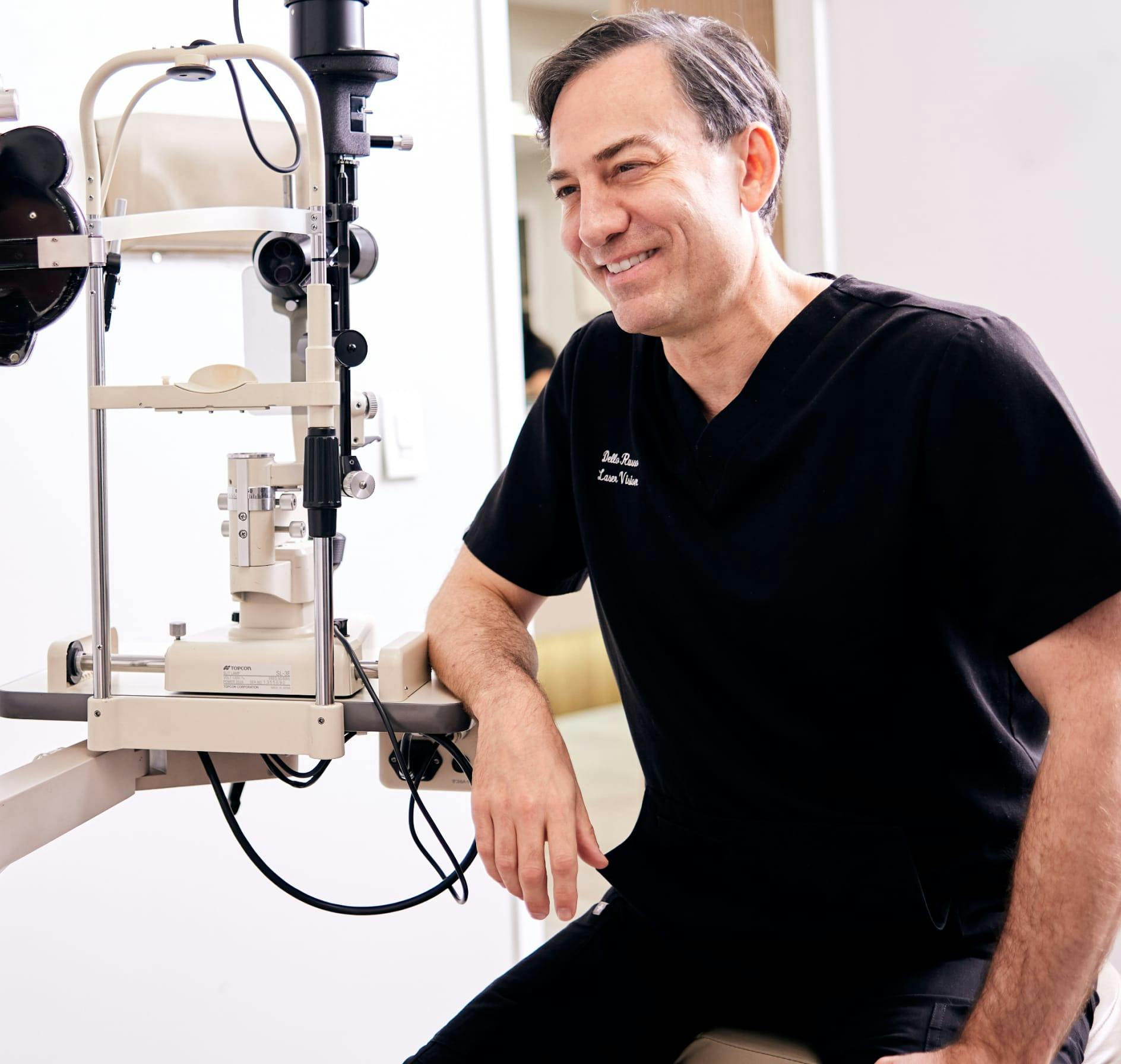1. Are You a Good Candidate?
Did you know not everyone qualifies for LASIK surgery? Each patient is unique—it’s essential to consult an experienced eye surgeon to determine if you qualify for LASIK. Your surgeon will ultimately determine whether LASIK is right for you based on a number of criteria, including:
- General health
- Current prescription
- Corneal thickness
- Pre-existing eye conditions
- Age
Learning you don’t qualify for LASIK can be frustrating, but remember that technology is constantly changing and improving. Although you may not be suitable for LASIK surgery now, you may qualify for other vision-enhancing procedures we offer at Dello Russo Laser Vision, like PRK, or Photorefractive Keratectomy. You may also qualify for LASIK in the future if, for example, you are under 18.
2. Stop Wearing Your Contact Lenses Before LASIK Surgery
If you wear contact lenses, part of your LASIK pre-operative instructions will be to stop and switch to wearing glasses before the procedure. Prolonged use of contact lenses alters the shape of your cornea—the cornea needs to revert to its natural shape, which can take several weeks after you stop wearing contacts. Measurements are taken before LASIK surgery to determine the amount of corneal tissue that will be removed. Not allowing your cornea to return to normal can lead to inaccurate measurements, potentially impacting the success of your LASIK procedure. As such, you should be prepared to stop wearing:
- Soft contact lenses at least two weeks before your initial LASIK evaluation
- Hard contact lenses at least four weeks before your initial LASIK evaluation
- Toric soft lenses or rigid gas permeable lenses at least three weeks before your LASIK evaluation
Make sure your eye surgeon knows which type of contact lenses you wear so that they can give you clear and accurate instructions about when to stop wearing them.
3. No Makeup, Perfumes, or Lotions
On the day of your surgery and several days afterward, avoiding any makeup, perfumes, or lotions is crucial, as directed by your doctor. All of these products can leave debris on your eyelashes, and if any of this gets into your eye, you risk infection both during and after the procedure. Your eye surgeon may also require you to thoroughly clean around your eyes and eyelashes in the period leading up to LASIK surgery. This will also help remove any debris or residue, reducing the risk of infection. Follow the directions you’re given to ensure successful vision results.
4. Arrange Your Transportation
Before coming in for your LASIK procedure, make arrangements for transport to and from your surgery. This is important as you may be given medication to help you relax before the procedure. These substances may stay in your system for some time and could affect your ability to drive. You may also experience blurred vision in the first hours after the surgery, making it unsafe to operate a vehicle. Plan ahead and make sure your transportation is pre-arranged so you can relax after your surgery. It is also advisable to arrange transportation to and from your first follow-up visit after surgery. You may still have some residual blurry vision or other temporary side effects during your follow-up appointment, which could impact your driving.
5. Wear Protective Eye Shields After Surgery
One of the things to know before LASIK surgery is that your eyes may feel a little strange after surgery. Your eyes may be teary or feel itchy and dry. Some patients report feeling a slight burning sensation or the feeling that something is in their eye. All these sensations are temporary and normal, but it’s essential that you not rub your eyes after surgery so you don’t disturb your healing cornea. To protect your corneas and allow them to heal correctly, you’ll need to wear protective eye shields for a short period—especially while you sleep. These will keep you from accidentally rubbing your eyes or putting pressure on them while you sleep, which could damage the healing corneal flap.
6. Bladeless vs. Conventional LASIK
Conventional LASIK uses a blade to create the corneal flap, while bladeless LASIK uses no blades. At Dello Russo Laser Vision, we provide cutting-edge bladeless LASIK, using an IntraLase laser to make the initial corneal flap for the procedure. We offer bladeless LASIK because it allows for precise measurements and control during the procedure and a lower risk of any adverse effects that can come with a blade in conventional LASIK.
7. LASIK Is Painless
Many people worry about the pain associated with a surgical procedure, but LASIK is pain-free. You’ll receive numbing drops in your eyes just before the surgery starts, and though you may feel slight pressure as the flap is created during the procedure, it won’t hurt. After LASIK, you may experience slight discomfort for a few hours, which can be easily addressed with over-the-counter pain relievers.
8. You’ll Be Awake for the Procedure
You’ll be awake for the entirety of your outpatient surgery. But wait, before you freak out, the procedure is incredibly quick, easy, and painless, as outlined above. The IntraLase laser prepares the cornea in just 30 seconds, with the entire surgery taking less than 30 minutes. Our friendly staff will be with you throughout the process, ensuring you feel comfortable.
9. Your Results are Almost Immediate, Developing in a Matter of Hours
Most patients notice improved vision within the first few hours following the surgery. Some even notice improvement immediately upon sitting up after the procedure. Remember that some blurred vision is entirely normal right after surgery, but in most cases, patients can return to normal activities the next day. Follow your doctor’s instructions to ensure your eyes heal quickly and correctly.
10. Your Eyes Might Feel Dry After LASIK
One of the number one things to do in preparation for LASIK eye surgery is to ensure you have artificial tears on hand, as some patients experience dry eyes while healing afterward. This is normal. Your doctor may prescribe eye drops for a few months after your procedure to ensure your eyes stay lubricated and to prevent infection and inflammation.



